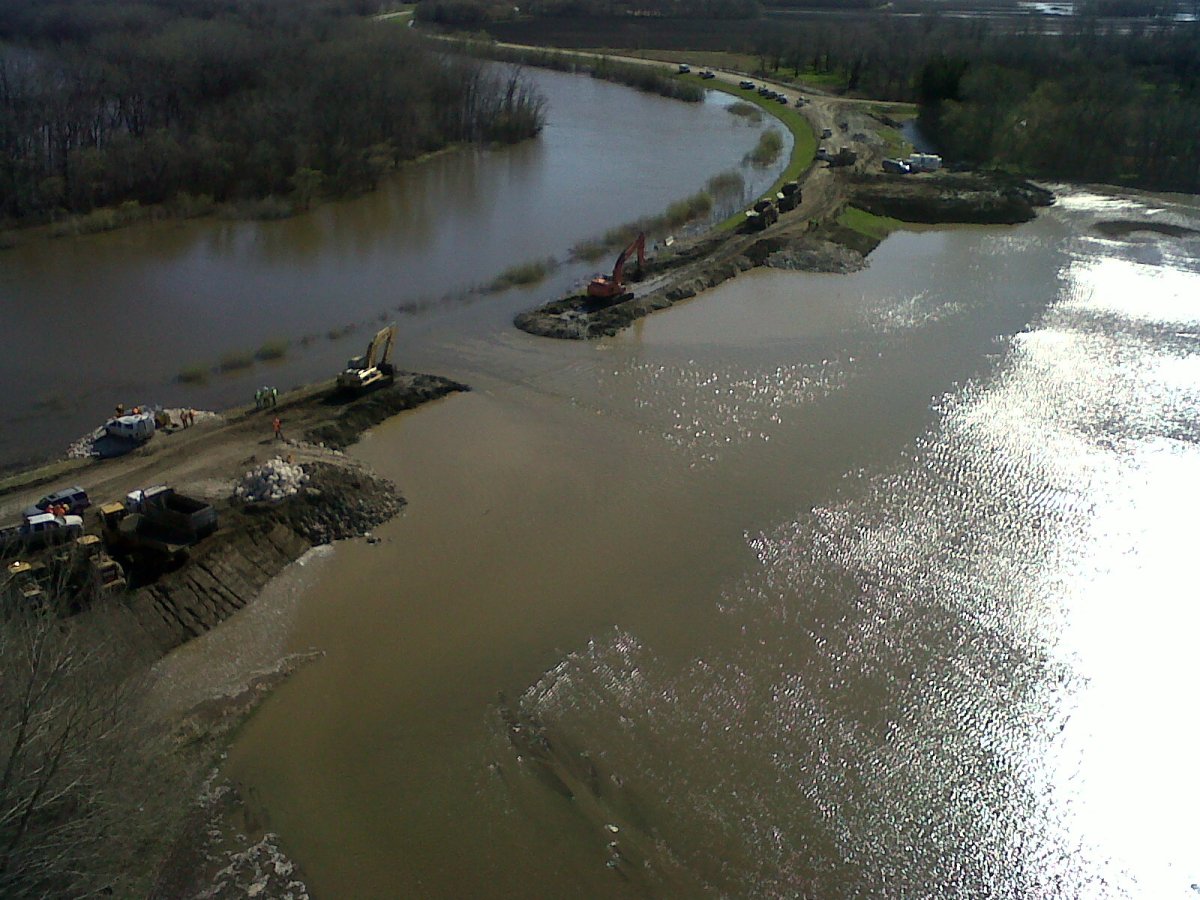WINNIPEG: Stubborn winter-like weather that has so far refused to end is adding to flood worries in Manitoba.

This year’s delayed thaw means the snow is likely to melt suddenly when warm temperatures finally arrive, which could be accompanied by spring storms.
“There is potential for mixed rain with snowfall, as well as a rapid snow melt,” Phillip Mutulu, the government’s chief flood forecaster, said Wednesday as he released the third flood outlook of the year.
With average weather over the next few weeks, Manitobans could see the type of spring flooding they’ve become accustomed to – a lot of farmland and roads underwater, including the main highway between Winnipeg and the United States border, and a lot of sandbagging around low-lying properties.
But no communities are expected to be evacuated or be cut off from the outside world by dike closures, the government said, unless the weather takes a decided turn for the worse.
The main areas of concern are in western Manitoba.
Thanks in part to heavy snowfall upstream in Saskatchewan and North Dakota, extra sandbags and dike-reinforcement work are being planned for areas along the Souris and Assiniboine Rivers, including the towns of Melita and Souris.
In Brandon, the province’s second-largest city, supersized sandbags are being brought in as a precaution to protect low-lying areas that were evacuated in 2011. But water levels are not expected to reach nearly as high as they did that year, when 1,300 residents had to leave their homes.
Still, city officials are keeping an eye out.
- 2021 heat dome fuelled by climate change, intensified wildfire risk: study
- B.C. introduces legislation recognizing Haida Gwaii Indigenous title
- Whale experts confident B.C. orca calf will survive, find family if rescue plan succeeds
- Chemical plant shuts down after high benzene levels detected near Ontario First Nation
“We’re very aware of the snowfall that Regina’s got, and of course that’s going to be hitting the Assiniboine River fairly intensely because we’re now into the middle of April and still at 1 C, -10 C kind of temperatures,” Brandon Mayor Shari Decter Hirst said.
“So when the melt does start, it’s going to be rapid and intense.”
As usual, much depends on the weather over the next several weeks: How quickly the snow melts, whether major dumps of snow or rain occur at the same time as the melt and whether unpredictable ice jams develop.
Flood preparations are an annual ritual in Manitoba, where melt water comes from as far away as Alberta and South Dakota.
In 2011 – one of the worst years on record – thousands of people were forced from swamped houses and cottages along the Assiniboine River, Lake Manitoba and Lake St. Martin. Many First Nations residents have still not returned to their homes.
The cost of flood-fighting, repairs and compensation reached $1.2 billion.
Last year was an entirely different story as low snowfall and nice weather made flooding a non-event.
The government has an array of flood-fighting tools at its disposal: amphibious ice-breaking machines to keep rivers jam-free, dikes and channels to protect many communities, and reservoirs that can hold water back to regulate river levels.
Winnipeg is protected by the biggest of all flood-fighting measures – a 47-kilometre-long massive ditch that diverts water around the city.
Two independent reviews this year have called on the government to do more.
The reports criticized the province for using outdated technology and inexperienced forecasters during the 2011 flood. They also call for new capital projects, including a new reservoir along the Assiniboine and a second outlet on Lake Manitoba to reduce water levels when necessary.
Steve Ashton, the minister responsible for emergency measures, said Wednesday he accepts the reports’ findings, but warned that the cost of implementing all the ideas could top $1 billion.



Comments